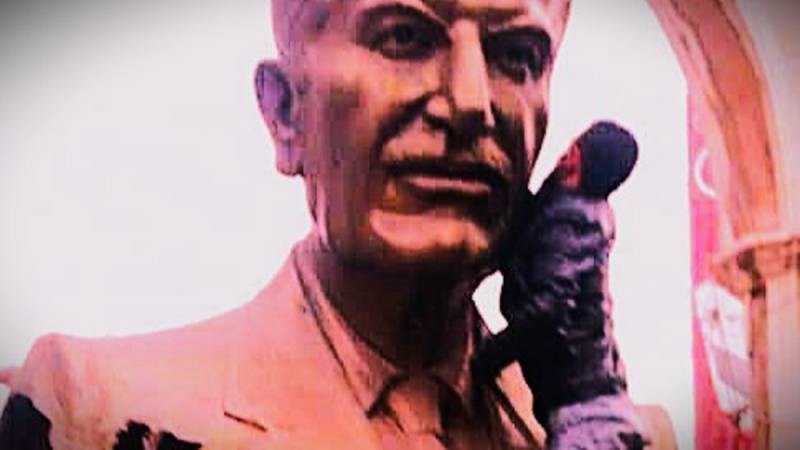
In April 1904, famous English geographer, theorist, politician and diplomat, Sir Halford Mackinder writing in The Geographical Journal, presented what became known as the Heartland Theory: whoever rules Eurasia will rule the Heartland, whoever rules the Heartland will rule the World Island, and whoever rules the World Island will rule the world.
My point here is to stress the nexus between geography and strategy. In simple terms strategy can only unfold along geographical lines. The tyranny of geography can neither be dismissed nor overcome. But let's park this for a moment and get to what's happening in Syria because this might surprise some, if not all, but Syria is just one component of what's happening in that country.
On November 27, an unequal ceasefire went into effect between Israel and Lebanon. The same day a Salafi-Jihadist group, Hayat Tahrir al-Sham (HTS), which controlled Idlib moved to swiftly seize control of a military base and 15 villages held by government forces in north-western Aleppo province. HTS also cut off the main highway from Damascus to Aleppo, the second-largest Syrian city. By December 8, at the time of writing, HTS forces had advanced over 350km to the capital, Damascus, and reports indicated that Bashar al-Assad had either fled or been killed.
En route to Damascus from Aleppo, HTS fighters captured Hama and Homs. Videos showed Assad's Syrian Arab Army melting away. There was no resistance and HTS advancing vehicles were moving openly on the main highway with no air support — i.e., they could have been taken out by anyone operating air sorties for ground attacks. Why do I mention this? To establish two facts as we proceed.
FACT 1: military offensives require lengthy and detailed preparations — developing a plan through advance intelligence, concentrating forces, working out logistics. Offensives are not about a body of men getting up one day and moving from point A to B. They require complex planning and execution depends on sustainment.
Question: how is it that the United States (its Western allies) and Israeli intelligence did not pick up this activity? Answer: because they did not want to. They knew this offensive was coming because it was and remains part of the bigger strategic game they were/are playing.
FACT 2: HTS began in 2011 as Jabhat al-Nasra, an Al Qaeda affiliate. The leader of Da'esh, Abu Bakr al-Baghdadi, was also involved in its formation. In 2016, the group's leader, Abu Mohammed al-Jawlani, nom de guerre of Ahmed Hussein al-Shar'a, broke ranks with Al Qaeda, dissolved al-Nasra and instead named it Hayat Tahrir al-Sham when it merged with several other similar groups a year later. HTS is a US-designated foreign terrorist organisation and Jawlani has a $10 million bounty on him.
How does Iran link up with Lebanon if it does not have friendly governments or spaces in Iraq and Syria? It can't. Those two countries provide the land bridge to Iran. Why is this bridge so important? Because it allows the strategic link-up between Iran and Hezbollah. Why is that link-up vital? Because without it Iran cannot help and replenish Hezbollah
Question: how is it that Jawlani, who worked in the shadows, is suddenly in the open and giving interviews to the international media, including CNN, without fear of being taken out by the US, a standard US counterterrorism policy? Also, how is it that the US Warthog ground attack aircraft let long, exposed HTS convoys move on M4 without taking them out, as they would force concentrations of any FTO while strafing Iraqi militia reinforcements coming into Syria to help Assad? Answer: because the US (its allies) and Israel are in on the bigger game in which HTS is a pawn and Assad was to be expended.
Let's now return to geography and the larger picture. That's where who controls Syria becomes crucial for two sets of state actors: Russia and Iran versus US and Israel. There's a third actor too, Turkiye. In fact, right now it is the most important in some ways and has played a role in its "national" interest that places it squarely, for the time being, in the US-Israel camp. Here goes.
Take a look at the map because maps speak better and clearer than reams of paper, which is why militaries and strategists rely on them. How does Iran link up with Lebanon if it does not have friendly governments or spaces in Iraq and Syria? It can't. Those two countries provide the land bridge to Iran. Why is this bridge so important? Because it allows the strategic link-up between Iran and Hezbollah. Why is that link-up vital? Because without it Iran cannot help and replenish Hezbollah. Why is such help crucial? Because Hezbollah is the only force stopping Israel from achieving its goal of a Greater Israel. This bridge is also the lifeline to the Palestinian resistance, not in a physical sense, but in terms of Hezbollah being a sword over Israel's head.
So how does one destroy this land bridge? By taking out either the western (Syria) or eastern (Iraq) pier of the bridge. It's the same as destroying bridges to delay the enemy's advance. Only in this case Iran cannot build a pontoon bridge to link up with Hezbollah.
Unfortunately, Syria had within its body politic the fault-lines which could be exploited at the right moment. Bashar al-Assad was cruel, to the point where he was prepared to accept the deaths of Syrians and the destruction of Syria to maintain his grip on the country. Without Iran, Hezbollah and Russia he would have gone by 2015. The hi-resolution pictures which Caesar (codename of Syrian military photographers who defected) smuggled out of Syria show the extent of torture in Syrian prisons. One needs a very strong stomach to see them.
This was a terrible dilemma, therefore. For Russia, Syria has been important from the Soviet days. But post-Soviet Union, Russia was also motivated by two broad strategic objectives: remaining in Syria was important to challenge the US role in the MENA region and to help Assad in its fight against what Russia considered the radical Islamist threat. For Iran it was a fight against ISIS and AQ, the link-up with Hezbollah and maintaining its outreach in the MENA region.
This is where it's important to talk about the third regional actor: Turkiye. Ankara has three main objectives in Syria: the Kurdish problem, Syrian refugees and Syria as a client, Sunni state. The Kurdish problem is the oldest and since the formation of the Kurdish autonomous region in northern Iraq, Ankara has been wary of Syrian and Turkish Kurds consolidating to fight for their own state. This is what prompted Ankara to help ISIS fighters take on Kurdish forces in Syria. Turkiye also conducted four major and multiple smaller military operations to create buffer zones in northwest Syria and northern Syria. By mid-2023, Ankara maintained 125 military sites in Syria's north with 12 military bases.
Today's pawns can become tomorrow's problem. But for now, as per Israeli media, HTS fighters have told Israeli channels that they love the Jewish state and want to live peacefully with Israel
The new offensive was green lighted by Ankara. They are not even pretending otherwise. Gönül Tol's book Erdoğan's War: A Strongman's Struggle at Home and in Syria is arguably the best monograph on Turkiye's policy in Syria.
Result: Ankara's policy for nationalistic reasons has fit in perfectly with US-Israeli policy: get rid of Russia and Iran. This is why, even as HTS fighters entered Damascus, Israeli tanks crossed into Syria in the buffer zone near Quneitra (a city in southwestern Syria). Part of Qunaitra Governorate lies within the buffer zone. The buffer zone is monitored by the United Nations Disengagement Observer Force, which is mandated under UNSC resolution 350 following the 1973 War.
There are still many small moving parts and today's pawns can become tomorrow's problem. But for now, as per Israeli media, HTS fighters have told Israeli channels that they love the Jewish state and want to live peacefully with Israel.
According to an activist quoted in the Times of Israel, "Nobody knows if Iran and the regime would have been weakened without the recent Israeli attacks in Syria, which have allowed us to return and free the lands and the country."
The window of opportunity has been exploited by Turkiye, the US and Israel: Russia focused on Ukraine; Iran and Hezbollah weakened by a yearlong conflict. Gaza razed to the ground. Israel now has a huge strategic space to pursue its Greater Israel dream, especially with Donald Trump entering the White House on January 20, 2025.
As former British diplomat, author and broadcaster Craig Murray has written, "A truly seismic change in the Middle East appears to be happening very fast. At its heart is a devil's bargain – Turkey and the Gulf States accept the annihilation of the Palestinian nation and creation of a Greater Israel, in return for the annihilation of the Shia minorities of Syria and Lebanon and the imposition of Salafism across the Eastern Arab world."

